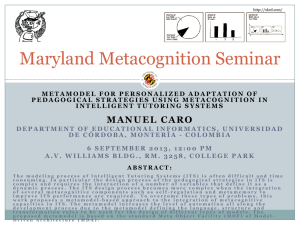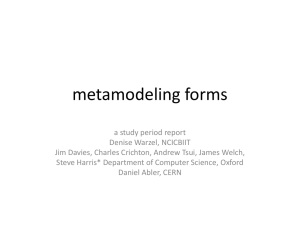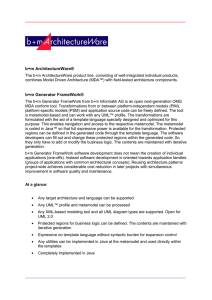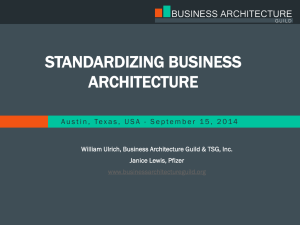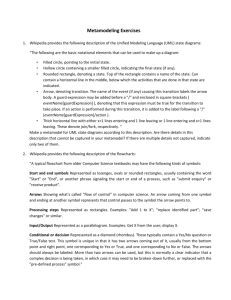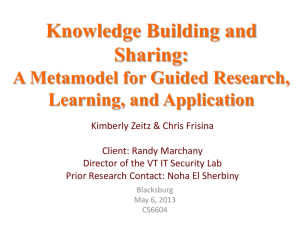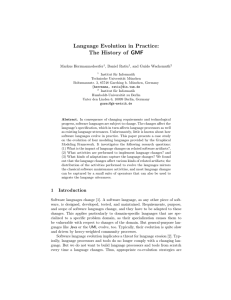Review Topics The 3 Major Components of Workflow Management Systems 1.
advertisement
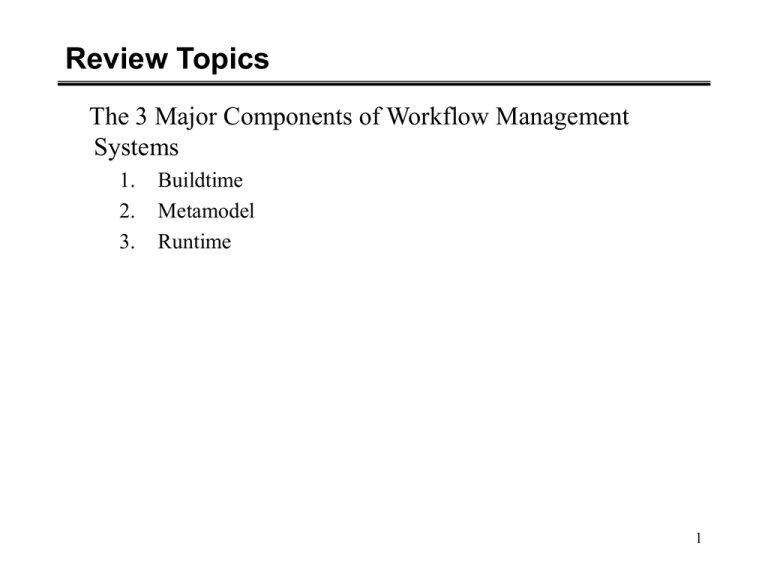
Review Topics The 3 Major Components of Workflow Management Systems 1. 2. 3. Buildtime Metamodel Runtime 1 Buildtime • The buildtime component of workflow systems provides the functions and capabilities to define, test, and manage all workflow related information • The buildtime component of workflow systems also provides functions to manage and administer the workflow system 2 Buildtime (Contd.) • The buildtime of a workflow system usually manifests itself in two different ways: – Graphical User Interface (GUI) • Business/workflow modeling tool • All information is stored and managed in the WF system’ database • The modeling tool operates either in the connected or disconnected mode with the WF database – Workflow Definition Language (WFDL) • The language reflects the underlying structure of the meta model • See page 67 of the text for a sample of WFDL 3 Buildtime (Contd.) • Organizational data is usually stored in systems outside the boundaries of a WFMS. • Organizational data is periodically extracted into the WFMS using batch processes – Batch processes are generally used for import export function to and from the WFMS respectively – Online processes are used for CRUD like operations • Soon as the process model goes into production, the process model is frozen. The frozen state is called process template 4 Buildtime (Contd.) • No program interfaces directly with the database of the WFMS • The buildtime component manages the database of the WFMS for all definitional data using an Application Programming Interface (API) • The API supports batch and interactive modes 5 Metamodel • Metamodel provides the constructs and rules to model a process, organization, or technology (program) • It’s a model of a model • It has many similarities with a data model, especially meta data 6 Metamodel - Organization • Lets take a look at the Organizational Metamodel implemented by MQSeries Workflow on page 37 • WFMS can support: – Fixed organizational model – relationships cannot be changed in the metamodel – Variable organizational model – relationships can be changed in the metamodel, even a new metamodel can be created • The underlying model to model the metamodel could be a data model or an object model 7 Metamodel - Organization • The organizational data of a WFMS can be managed in three different ways: – WFMS manages all organizational data in its own database – WFMS shares the data with other systems, and each of the systems can modify the data – WFMS only access the organizational data that is managed by some other system 8 Metamodel - Process • • • • • • • • Control Connector – the arrow that defines the flow of control from one activity to another activity. Fork – the activity that is the source of parallel work Join – the activity that is the target of the parallel work Join Condition – whether the activity can be performed Activation condition – when the activity can be carried out Exit condition – when the activity has successfully completed Input container – the data that is passed to the process or activity Output container – the data that is returned by the process or activity 9 Metamodel - Process Assess Risk Collect Credit Information Accept Risk Customer # # of people requesting loan Activity input container Risk rating Activity output container Process input container Request Approval Reject Risk 10 Metamodel - Process • The are four general types of activities: – Information activity – no implementation, e.g. call a customer – Program activity – is implemented by a program, e.g. run the risk assessment program – Process activity – is implemented by another process, e.g. invoke a sub-process – Bundle activity – is implemented by bundling the multiple instances of the activity using the planning (how many) and processing (invokes the program/process) phases. 11 Metamodel - Program • Focus on the process first • When defining an activity, you may not know which operating system the activity may be operating on • You should be able to change the implementation without changing the process model (late binding) 12 Metamodel - Program Activity Program Properties Common Properties WINNT DLL PATH D:\PROGRAMS\COLLINF.DLL AIX EXE PATH D:\PROGRAMS\COLLINF.EXE AIX Windows NT OS390 13 Metamodel - Program Activity OS MQI ORB TPMon Comm. Program Call Message Queuing Method Invocation Transaction Start RPC Invocation Mechanism Program 14
